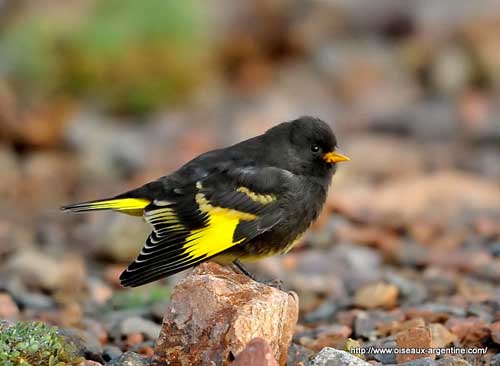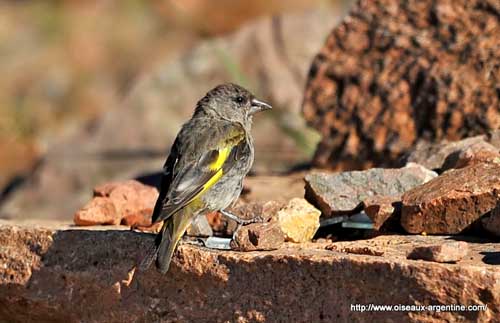
Fr: Chardonneret noir
All : Schwarzzeisig
Esp : Pinero Negrillo
Ital : Negrito della Bolivia
Nd: Zwarte Sijs
Sd: Svartsiska
Photographers:
Philippe et Aline Wolfer
GALERIE
Text by Nicole Bouglouan
Sources:
HANDBOOK OF THE BIRDS OF THE WORLD Vol 15 by Josep del Hoyo-Andrew Elliot-David Christie - Lynx Edicions – ISBN: 9788496553682
BIRDS OF SOUTH AMERICA – Passerines - by Robert S. Ridgely and Guy Tudor – HELM Field Guides – ISBN: 9781408113424
Ottaviani, M. (2008) Monographie des Fringilles (fringillinés – carduélinés) – Histoire Naturelle et photographies, Volume 1. Editions Prin, Ingré, France, 488 p.
Ottaviani, M. (2011a). Monographie des Fringilles (carduélinés) – Histoire Naturelle et photographies, volume 2. Editions Prin, Ingré, France, 286 p.
Ottaviani, M. (2011b). Monographie des Fringilles (carduélinés) – Histoire Naturelle et photographies, volume 3. Editions Prin, Ingré, France, 320 p.
BirdLife International (BirdLife International)
Wikipedia, la enciclopedia libre
Black Siskin
Spinus atrata
Passeriforme Order – Fringillidae Family
BIOMETRICS:
Length: 12-13 cm
Wingspan: 13 cm
Weight: 15-17 g
DESCRIPTION:
This monotypic species is sometimes placed in the genus Spinus or Sporagra, but currently, the Black Siskin remains in the genus Carduelis, waiting for more information in order to determine true relationships.
The adult male has glossy black plumage overall, except the bright yellow lower belly and undertail-coverts. The forked tail show yellow sides at base too.
On the wings, we can see a bright yellow flash formed by yellow-tipped greater coverts and broad yellow bases of all flight feathers, but much reduced on secondaries. The lowest tertial shows a white edge at tip.
Sometimes, the belly may be washed brown with indistinct yellowish feather tips.
The bill is horn-coloured, but darker on upper mandible with dusky culmen, and paler below. The eyes are black. Legs and feet are blackish-brown.
The female is very similar, but she has slightly browner upperparts and paler yellow wing patch. She has a narrow yellow wing-bar on greater coverts. On the underparts, yellow is variable and often more extensive, sometimes to the throat, with brownish or blackish mottling on breast and flanks.

VOICE: SOUNDS BY XENO-CANTO
The Black Siskin usually sings from exposed perch during the breeding season. The song is accompanied by fast wing-flapping, or the wings are dropped. This song is rapid, loud and continuous.
The contact call within a flying group is a repeated “knot-knot-knot”. When perched, it utters a nasal call “chío” if alarmed. While moving, it gives some “suit-suit”.
Captive birds utter slow, sweet and melodious song including phrases with various notes.
HABITAT:
The Black Siskin is fairly common in puna grassland, but also on rocky slopes and ravines in high Andes. It may frequent hillsides with scattered vegetation, woodland edges and bushes. It may be found occasionally on edges of cultivated areas or close to farms and villages in the Andean steppes.
This species is visible between 1800 and 4800 metres of elevation, but mostly between 3500 and 4500 metres.
RANGE:
The Black Siskin is found in CS Peru, S in the Andes to N Chile and NW Argentina.
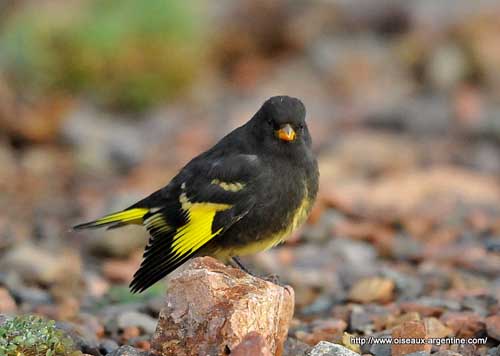
BEHAVIOUR:
The Black Siskin feeds mainly on seeds from plants of genus Chenipodium, Brassica and some others, low-growing plants and bushes. It occasionally takes insects. It forages in pairs or small flocks on the ground and in low vegetation. Outside breeding season, they gather in larger flocks and in mixed-species groups.
The Black Siskin breeds after the rainy season, when its favourite seeds are available. The male performs flight displays accompanied by songs.
This species breeds in colonies, but each pair has its own small territory and defends a small area around the nest. They often have reduced defence behaviour, but on the other hand, more communication between mates, helping to maintain the pair-bond.
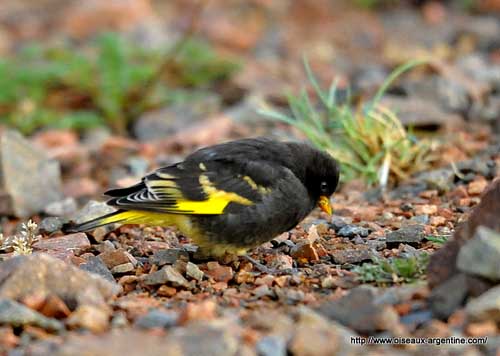
The male finds and courts the female white they still are in winter flocks. Then, it becomes more aggressive towards other males and often chases them. The male displays and adopts postures to enhance the bright yellow patches of its plumage, by raising or lowering the wings, bill pointed upwards, and sleeking its plumage. Later, courtship feeding occurs too. Then, both mates select the nest-site and defend it. Prior to copulation, the male performs flight displays and sings loudly.
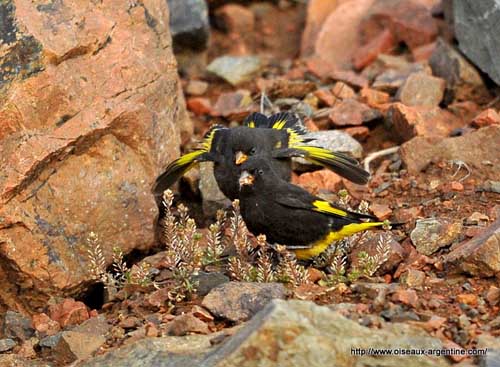
Male on foreground.
It is probably feeding the female
The Black Siskin is resident in its range. It performs altitudinal movements, descending from high to lower areas in non-breeding season.
FLIGHT:
The Black Siskin may perform a “moth-flight” as courtship display in front of the female. This is a short, low-level fluttering flight, often under cover. Other more elaborated flights can be performed in open air and higher.
REPRODUCTION:
The breeding season occurs between September and November, with eggs in November/December and juveniles in April/June.
The Black Siskin’s nest is built by both adults. This is a cup-shaped structure placed in low vegetation. It is made with plant fibres and the inner cup is lined with animal hair and wool, to keep the eggs or chicks warm at such high elevation.
The female lays 3-4 pale bluish-white eggs, sometimes with grey spots. She incubates alone during about 12 days. The chicks are fed by both parents with insects. They fledge about two weeks after hatching and remain in family group.
This species usually produces only one brood per season.
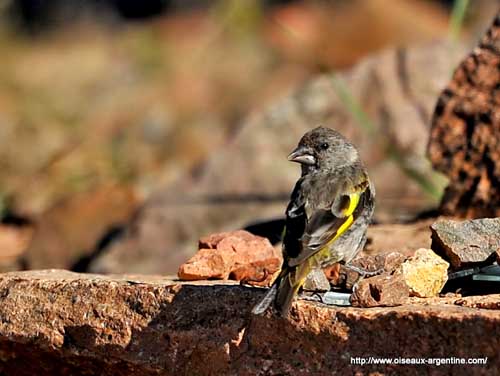
DIET:
The Black Siskin feeds mainly on seeds from various plant species, usually of genus Chenopodium, Brassica and Festuca, found in its habitat. It also takes some insects.
PROTECTION / THREATS / STATUS:
The Black Siskin populations appear to be stable, and this species can be uncommon to locally common, but it is patchily distributed.
These birds are often reared in captivity where hybridization with other Carduelis occurs. The species is threatened by cagebird trade and needs protection in this way.
But currently, the Black Siskin is not globally threatened.
